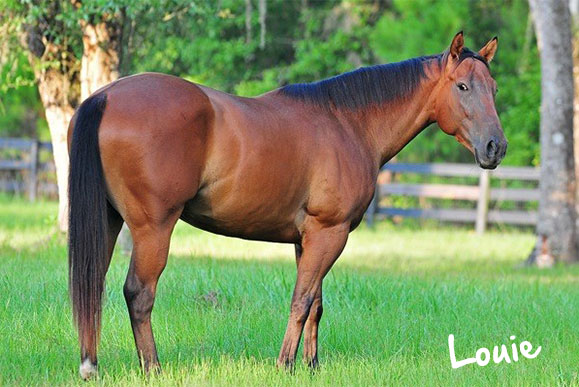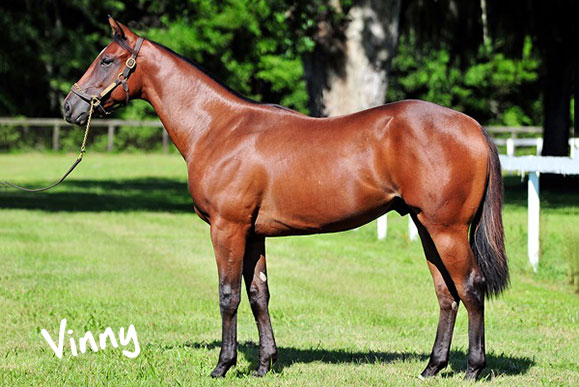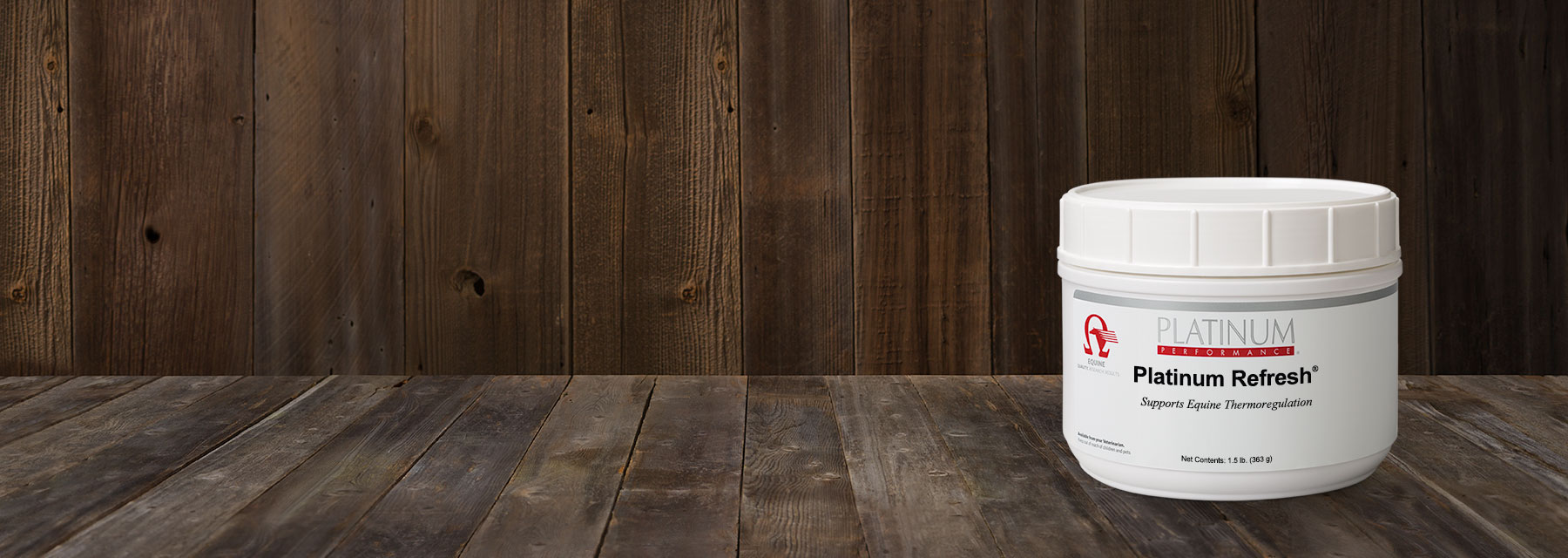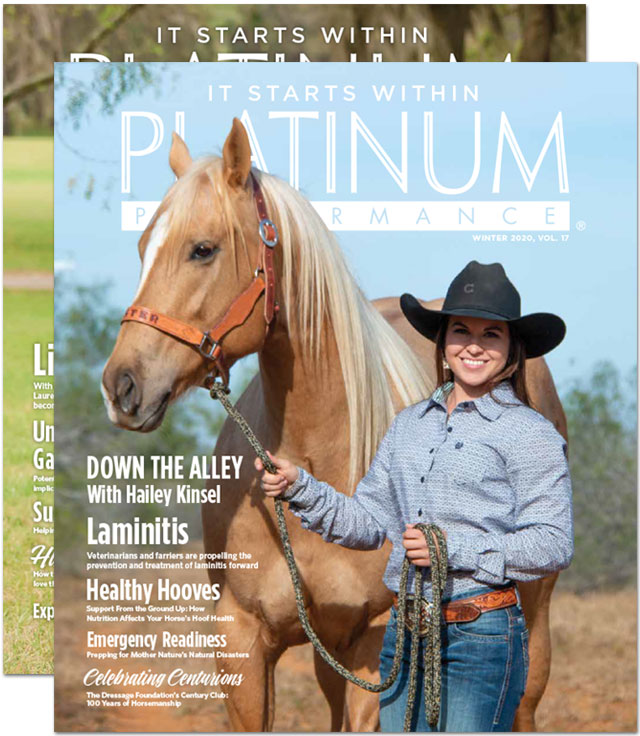Supplementing to Support Healthy Sweating
Anhidrosis, the inability to sweat, is a frustrating issue for horse owners, and a debilitating health problem for horses. Horses diagnosed with anhidrosis typically live in warm, humid climates with a high proportion of cases being clustered in the states along the Gulf Coast of the United States.1
Clinically affected horses are unable to dissipate heat by sweating. In some horses, the reduced ability to sweat develops gradually but in other horses, the change is rapid. Anhidrotic horses often show signs of an increased respiratory rate and even respiratory distress as they work to lose heat through their respiratory tract.1-2 Their core body temperature may remain elevated, and both their heart rate and blood pressure may also be above normal. Chronically affected horses develop dry, flaky skin as well as thinning of their hair coat. The athletic potential of anhidrotic horses is greatly limited, resulting in the loss of use of the horse unless the horse begins to sweat normally.
The traditional therapy for anhidrotic horses has focused on moving the horse to a cool environment with low humidity. Many horses will resume sweating during the cooler winter months, but horses that are severely affected with anhidrosis may not improve even with appropriate environmental management. While cooling of an anhidrotic horse during the hot summer months can be accomplished in a temperature regulated stall, this housing change is not an option for most horse owners, leaving few therapies available for managing anhidrosis.


“Louie is a chronic non-sweater, stopped sweating before he was weaned and is sweating better than ever after being on Platinum Refresh. Vinny is currently in race training and has shown marked improvement after 2 weeks on Platinum Refresh. I’m extremely pleased with the transformation this product has produced, as I have tried everything else to no avail.”
— Sandra M., Platinum Performance® Client
Nutritional Support
Electrolytes — Sodium, potassium and chloride are the electrolytes that are lost during normal sweating in the horse. Anhidrotic horses often begin to sweat after treatment with sodium and potassium chloride.1,3
Antioxidants, such as vitamin E, have been documented to be an effective treatment in some horses with anhidrosis.4-5 When a horse is unable to sweat, oxidative damage likely increases due to the high environmental heat stress the horse encounters. Therefore natural antioxidants, such as vitamin E and vitamin C, may be helpful in limiting the damaging effects of free radicals and other products of cellular oxidation.
A variety of B vitamins help to support normal cellular function in anhidrotic horses.
Arginine, an amino acid, is an important nutrient in the formation of nitric oxide synthase. In the horse, endothelial nitric oxide synthase (eNOS) may promote peripheral vasodilation. An isoform of eNOS, neural constituent NOS (ncNOS) helps to regulate neurotransmission in the central and peripheral nervous system. Both forms of NOS are postulated to play an important role in the physiological control of sweating in the horse. Arginine is a precursor to nitric oxide synthase (NOS) and thus may play a role promoting blood flow in these pathways.
Field Trial
There are a variety of important ingredients that have been shown to help support sweating in the horse. Non-sweaters often begin to sweat after being supplemented with electrolytes; sodium and potassium chloride as well as vitamin E. Results from a field trial of Platinum Performance® Equine administered along with Platinum Refresh®, designed to support sweating in anhidrotic horses showed a 74 percent success rate in restoration of sweating.

Anhidrosis Protocol
Protocol: Administer 1-2 scoops of Platinum Performance® Equine, Platinum Performance® CJ or Platinum Performance® GI BID and 1 scoop of Platinum Refresh® BID.
SID = 1 TIME DAILY, BID = 2 TIMES DAILY, TID = THREE TIMES DAILY
For the Best Results
Use Platinum Refresh® in conjunction with one of the foundation formulas — Platinum Performance® Equine, Platinum Performance® CJ or Platinum Performance® GI.
Literature Cited
1. Hubert JD, Beadle RE, Norwood G. Equine anhidrosis. Vet Clin No Am: Equine Practice 2002;18:355-369.
2. Jenkinson DM, Elder HY, Bovell DL. Equine sweating and anhidrosis Part 2: anhidrosis. Vet Derm 2007;18:2-11.
3. Warner A, Mayhew IG. Equine Anhidrosis: a review of pathophysiologic mechanisms. Vet Res Commun 1983;6:249-264.
4. Marsh JH. Treatment of ‘dry coat’ in thoroughbreds with vitamin E. Vet Rec 1961;73:1124-1127.
5. Currie AW, Seager SWJ. Anhidrosis. Proceedings of the American Association of Equine Practice 1976;22:249-251.

by Tara Hembrooke, PhD, MS,
Platinum Performance®

